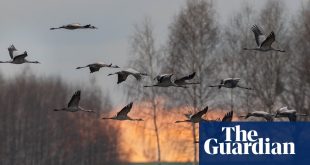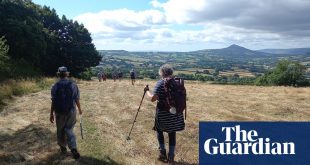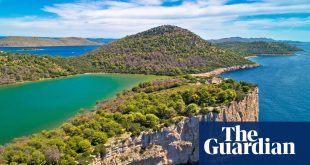The winding coastal pathway promised to be sublime: a gorse-lined trail atop a sweep of airy crags that fell away to reveal a nesting ground for kittiwakes, razorbills and rare black guillemots. The weather, a mix of smoking fog, brutal winds and lashing rain, was another matter. Talk about blowing the cobwebs off.
“Take a bracing walk along the clifftops,” read the info board near the trailhead at Whitehaven harbour, where I began. “The outlook is great for sea watching.” On the morning I set off, storm watching Shackleton-style was more apt.
The forecast wasn’t part of the plan for my three-day hike along Cumbria’s cove-nibbled coastline. I’d travelled by train from Carlisle in search of a new 40-mile section along the England Coast Path, a journey first conceived to stitch together existing byways and clifftop footpaths around the entire coastline into a 2,795-mile trail, but more relevant than ever given our new, pandemic-driven love of the countryside.
The stage from Whitehaven to Silecroft also represents a radical change of focus for a region so dependent on the Lake District. Many areas of the national park have been overwhelmed by a surge of domestic visitors because of Covid (and tourist cars could even be banned from certain places next summer). But farther west, away from the mountain lakes and myth-inspiring fells, lies a different portal to adventure: empty beaches, the soft crunch of boot on sand, the fall of seabirds on the breeze.
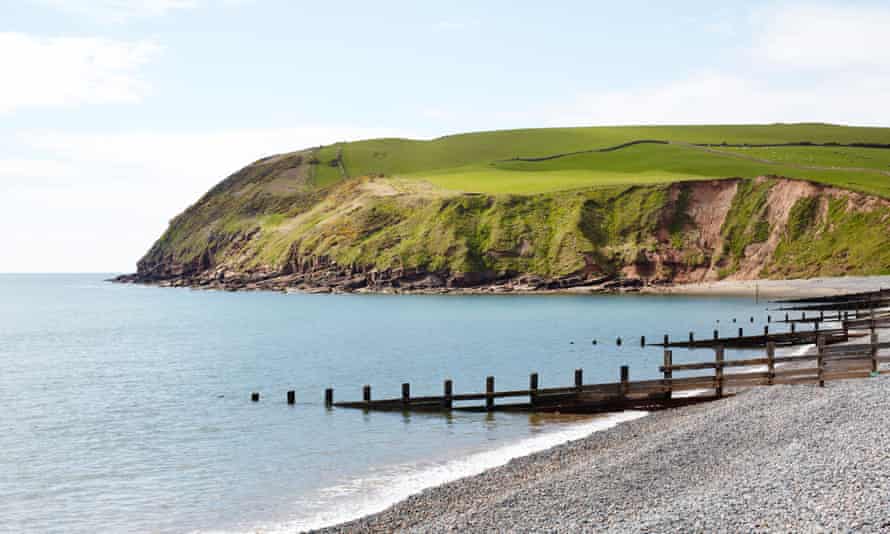
Arriving early on the trail meant I had a full day’s walk ahead. After a snoop around the Beacon Museum, where vestiges of north-west England’s maritime history are on display, I walked along quaysides once filled with 200 tall ships laden with sugar, rum and textiles and on to the route proper. A Candlestick chimney and miners’ lodge, where once charcoal-blackened Cumbrians slept before taking a shaft down to a seam five miles under the sea, were a reminder of altogether different times.
The industrial landscape began to fade and sodden sheep appeared in fields verging on the sheer drops of high sandstone sea cliffs. Most Cumbrians need no introduction to St Bees Head, the RSPB reserve that curves south of Whitehaven, where peregrine falcons ride the thermals. Here there is an enormous colony of cormorants, fulmars and puffins, and the viewpoint across the Irish Sea towards the Isle of Man and south-west Scotland at times puts a carousel of dolphin pods and harbour porpoises on show. I made do with a glimpse of Galloway through the smirr while gulls dived for cover.
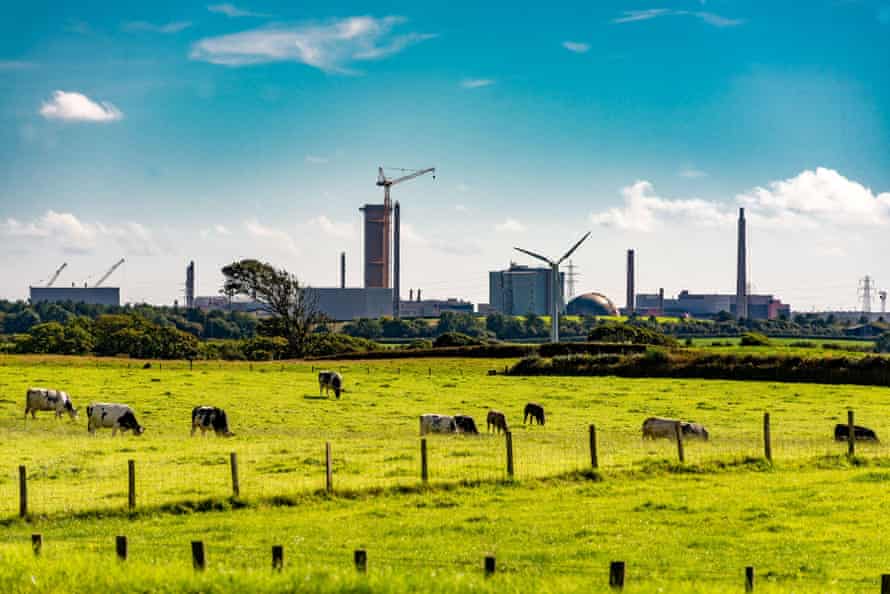
Along the tapered trail, off in the distance and almost built on to the shoreline, the scene changed from fudge-brown beaches to a salvo of chimneys, fuel storage ponds, waste facilities and gridlocked power lines. This complex concrete geography was Sellafield, with about 1,300 buildings and by orders of magnitude the largest decommissioned nuclear site in Europe. I walked its boundary and was struck not by its horrible history – the Manhattan Project, the development of atomic bombs, had links with west Cumbria – but by the perverse industrial beauty of a power plant abutting England’s most stunning national park. In the rain, it looked like a Hollywood set.
About six miles farther along the shoreline, helped along by England Coast Path waymarking, I crossed from sea-hugging country lanes under the coastal railway and out through marram grass on to wild dunes for my first glimpse of the Esk estuary. By now, the moshing sea had abated and the dunescapes around Seascale and Drigg began to take on a half-hearted glow. Summer was trying to break through.
That day ended with another first: a night of drying my clothes on the radiators inside the Maid of Kent, one of two retrofitted Pullman coaches that can now be booked for self-catering stays beside Ravenglass train station. Built in 1917 and used on the frontline in France and Belgium during the first world war as part of the London and North Western Railway’s “Continental Ambulance” train, the historic carriage had seen far worse than my pink gooseflesh and claggy underwear.
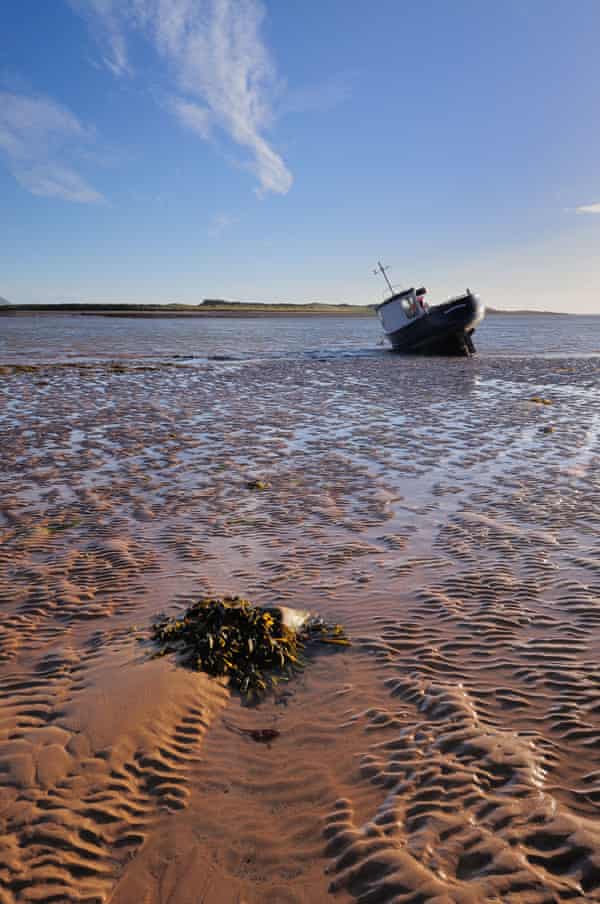
As the trailhead for the next stage, Ravenglass is also a gateway to some other fabulous distractions. First, a tootle along the lilliputian Ravenglass and Eskdale Railway, billed on nostalgic posters as “the smallest railway in the world”; in reality, today’s travellers chug into one of the Lake District’s prettiest sections aboard a toytown train. After that, the raw beauty of Eskmeals Dunes nature reserve at low tide, then dinner (fish and chips, of course) at the Pennington Hotel, the closest Cumbria gets to the Côte d’Azur.
Ease of access is what the England Coast Path is all about, even if it remains a work in progress. Some sections around the coastal margins require a brief detour or single-station hop and this sees me catch a train on day three to Hycemoor to continue my hike south.
As the miles passed, strata of communities revealed themselves, and it became clear that all English life can be found along the coast. Caravan clubs, farms, golf courses, country pubs, industrial lots, a string of fishing cabins, a prison, then, finally, a Ministry of Defence base used for large-calibre ammunition trials. It was all here.
Amid this scene, I reached Silecroft with sea salt in my lungs, walking what must be one of the loveliest beaches in England, at least for the rewarding natural high of getting there with my own two feet. Dog walkers were out with their hoods up. An elderly couple sat under a blanket on a bench, eating sandwiches. A father and son struggled to hang on to their kite in the wind. And from a sheen of silvery sand cluttered with tidal pools, I walked inland to the station for the last train home. Only then, did the sun finally come out.
 Top Naija News: Nigerian News, Breaking News Nigeria and World News Top Naija News is a daily news publication in Nigeria, delivering the latest breaking news in Nigeria and around the world.
Top Naija News: Nigerian News, Breaking News Nigeria and World News Top Naija News is a daily news publication in Nigeria, delivering the latest breaking news in Nigeria and around the world.
